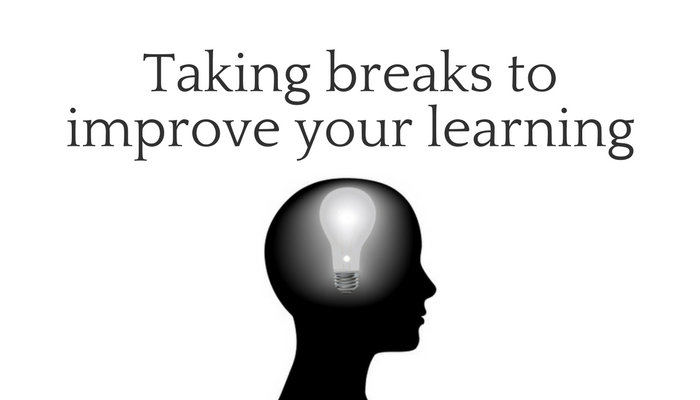You’ve probably experienced the following situation, but never understood why.
Whether at work or studying for exams, you hit a wall while solving a problem. After hours of intense focus and frustration, you finally step away. As you relax later that evening, you have
These mysterious breakthroughs aren’t as random as they appear.
Understanding how to facilitate more of these moments can help you overcome sticking points in your learning process.
Two Modes of Thinking
In A Mind for Numbers: How to Excel at Math and Science, Barbra Oakley describes two modes of thinking for problem solving: focused and diffuse.
Focused is what you normally associate with studying – focusing intently on one concept.
Diffuse thinking occurs when you are more relaxed. Instead of actively focusing on one subject, your mind wanders to a broader range of ideas.
The two modes of thinking are analogous to a flashlight. As you narrow the beam, the light shines deeper into a limited area (focused mode). As you broaden the beam, the light covers more area, but with less depth (diffuse mode).

Diffuse is the mode of thinking associated with Eureka! moments or shower insights – it helps you zoom out and think more “big-picture”.
Switching between both modes => optimal problem solving
You don’t need instruction on how to use focused thinking – you already do this when you sit down to study. Technical and abstract subjects like actuarial science require high levels of focused thinking.
However, the diffuse mode is often overlooked as part of the problem-solving process.
To illustrate its importance, imagine you are solving a maze puzzle, finding the route to the center of the circle.

To start, you may pick one route and follow it as far as you can. This is the focused mode at work.
What happens if your route leads to a dead end? In the maze puzzle, it’s easy to see the roadblock, so you immediately take a step back and try an alternate approach.
Actuarial problems are more difficult, and it’s harder to recognize these barriers. In fact, this phenomenon is well-known as the Einstellung effect – you can’t solve a problem because you are stuck in one approach, rather than considering other (more accurate) ones.
The diffuse mode of thinking helps you overcome the Einstellung effect. After struggling with a difficult problem (reaching a dead-end in the maze), your mind will work in the background to consider alternative routes.
However, your diffuse mode is blocked while you are focusing on the problem. You must allow breaks to relax and let your diffuse mode work toward a solution.
Grinding through a difficult concept is like trying to hammer down a wall in the maze. It may work eventually, but you can find an easier path if you step back and consider alternative approaches.
Structuring your studying to include both modes of thinking
As mentioned above, your diffuse thinking cannot work while you are focusing.
When planning your study sessions, allow sufficient time for breaks.
Fill these breaks with relaxing activities that allow you to subconsciously work on problems. Light exercise (walking) or eating always worked well for me to facilitate diffuse thinking.
In Actuarial Exam Tactics: Learn More, Study Less, we recommend shorter study sessions (30-45 minutes) with 5-15 minute breaks in between.
This style allows you to switch between focused and diffuse thinking, while also reaping benefits from the spacing effect (discussed in Chapter 4 of the book).
Cautionary note
You should NOT interpret this article as an excuse to walk away from studying at the first sign of difficulty. You must first struggle with the problem for your diffuse thinking to kick in and have your mind work in the background.
With the maze problem, you don’t want to constantly survey the perimeter without exploring any path in depth – that won’t get you further toward the solution. You must explore a path enough to see the roadblock or sticking point.
______________________
Takeaway: start thinking of breaks as a productive part of the study process (or your work, for that matter). As actuaries, we work with difficulty problems, and both modes of thinking (focused and diffuse) are critical to the problem-solving process.

For more tips on structuring your study process to study smarter, check out our book: Actuarial Exam Tactics: Learn More, Study Less
Study Smart, Pass Fast, Live Life
Mike & Roy
DISCLOSURE: This post contains an Amazon affiliate link for the book A Mind for Numbers. If you purchase through this link, we will receive a small royalty on the sale (at no extra cost to you). If you find our content useful, we greatly appreciate your support in using these affiliate links to help keep our site running.

